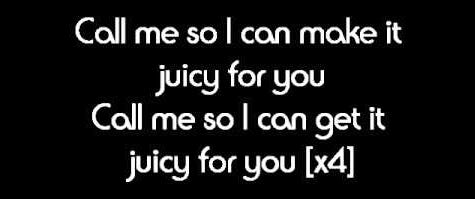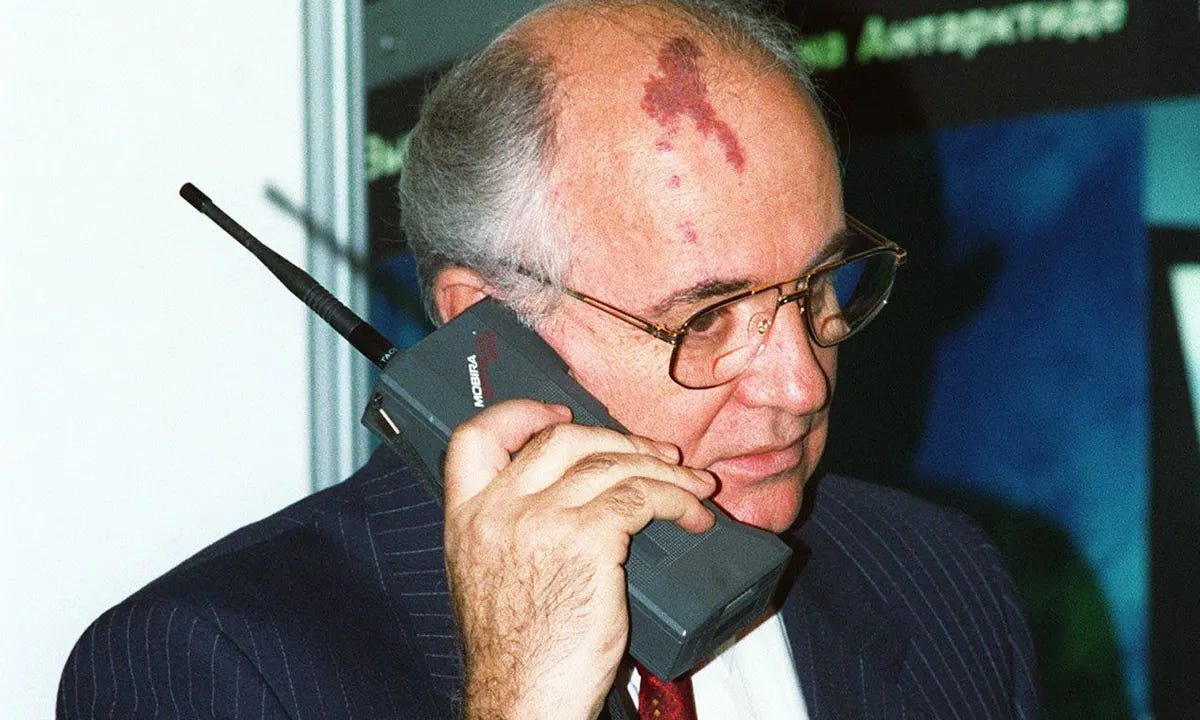Welcome to the 583 newly Not Boring people who have joined us since last Thursday! If you’re reading this but haven’t subscribed, join 6,483 smart, curious folks by subscribing here!
Already subscribed and want to climb up the Verified Not Boring leaderboard?
Remember Ringtones?
The lo-fi pocket songs that sparked the mobile revolution
Before the iPhone, Venmo, or Spotify, there were ringtones. You might remember them fondly as those lo-fidelity sounds we used to communicate our highly refined music taste every time someone called our cell. But ringtones were so much more than that. A billion dollar industry silenced seemingly overnight, ringtones laid the foundations of modern mobile consumer technology and set the stage for the App Store and mobile commerce as we know it today. And they are proof that even silly-seeming products can have an impact long after their meme fades away.
The Rise of the Ringtone
The first mobile phone call was made not by a silk-shirted Miami cocaine dealer in the 80s, but by a driver in St. Louis in 1946 from a heavyweight wireless system installed in an automobile. It took another 40 years to make it portable, reliable, and affordable enough (relatively speaking) to offer to the mainstream consumer.

Literally the size of a car
Even then, it didn’t quite go “mainstream”. A common reaction was: wow, that’s slick (it being the 80s and all), quickly followed up with but, like, who really needs a portable phone? The President... maybe? At the time, it was hard for ordinary people to imagine having to be reachable at any minute of the day.
Lol.
Anyways, it wasn’t until the 90s that owning a cell phone became relatively commonplace in the West. But then another problem reared its head. In the early part of the decade, phones came with preset, annoying, monophonic ringtones. Never ones to miss an opportunity to spend R&D dollars on minor inconveniences, humans manufactured a feature that allowed users to input custom ringtones. The Digital Minimo D319, released in 1996, was a Japanese-made device on which users could program custom ringtones by entering combinations of boops and beeps associated with keys on the number pad.

Pictured: groundbreaking innovation.
And people LOVED that shit. A book that taught users to recreate popular songs sold 3.5 million copies in its first year.
Then, in 1998, a Finnish dude tired of Nokia’s preset monotone interfering with his weekday hangovers (no joke) found a way to transfer audio files directly to his phone through text message and the ringtone revolution began in earnest. By 2002, 30% of all SMS traffic was requests for downloadable ringtones.
The rise of the custom ringtone, like many things, happened gradually, then all at once.
The ingredients were mostly in place by the mid-90s. You had network operators hungry to make back their deep infrastructure capex investments and diversify their revenue streams. You had a device literally manufactured to make sound with the capacity to send and receive digitized data. And you had MVPs -- customizable ringtones enabled by number pads in Asia and text messaging in Europe -- that proved demand.
Consumers jumped on custom ringtones because they represented the first, mainstream way of getting portable music, on-demand. No store, no CDs, no desktops. That was revolutionary -- imagine the possibilities! People could make an identity statement in a unique way, becoming an audio fashion accessory that users, young ones in particular, loved.
The only problem was, selling custom ringtones constituted explicit copyright infringement which, as they probably say in the South, strangled the turkey before it hatched (maybe?).
But two things happened in the late 90s: 1) the rise of music piracy and 2) the development of digital micropayment technology. The former sank music publishing revenues as CD sales plummeted; the latter created centralized micropayments platforms that could effectively collect royalties to be paid to music publishers in a way the web could not.

When music publishers and labels saw the potential for ringtones to reverse declining sales, they entered into royalty agreements with telecoms and ringtone providers.
And so the stage was set. We blasted into the new millennium frantically searching our pockets for the 8bit renditions of Smash Mouth and Shaggy that emanated from them. By the early 2000s, all the major record labels partnered with mobile operators to distribute and monetize the ringtone. At the time, observers proclaimed the ringtone to be the new single, and hailed the trend as “an industry shift no less important than the shift from the radio to the internet”. Haha.
Although that view didn’t age well, you can’t blame industry analysts for espousing it. The custom ringtone industry in the US grew from $68m in 2003 to $600m in 2006. So many ringtones were sold -- an estimated 520 million ringtones between 2001 and 2007 -- that the Recording Industry Association of America instituted ringtone charts and awards associated with them (Lil Wayne’s Lollipop went platinum 5 times).

And how could it not with lyrics like these?
Ringtones seeped deep into culture. Instead of music influencing ringtones, ringtones began to influence music. A wave of chart-topping rappers, including Soulja Boy, T-Pain and J-Kwon made music designed to sound good as polyphonic ringtones. Ringtones became a popular way to promote music as teasers, and served as cultural currency, offered as marketing incentives tied to a variety of promotional campaigns.
The world’s needle fit snugly with the ringtone’s polyphonic groove. But as quickly as they jingled into our pockets, consumers hung up on them.
Bye, Bye, Bye
As humans, we are really, really bad at predicting things, so few of us saw the fall of the custom ringtone industry coming.
From a 2007 peak of $1.1 billion in global ringtone sales, the industry shrunk by 97% in the following decade. “Admittedly, it was a little sad,” recalled an executive with BMI, a music publisher. “In BMI’s early digital days, we made more money from ringtones than anything else; it accounted for more than half of our income stream. And now when you think about it, it’s basically zero.”
There are a few likely reasons for its decline:
People stopped calling in favor of texting each other. Between 2008 and 2010, ringtone revenue declined 25% just as the average voice minutes used by 18-34 year olds, the ringtone’s main customers, declined by roughly the same amount.
The novelty of being able to customize phones wore off. As our phones evolved to offer web access, videos, games and social networking (especially with the rise of the smartphone) downloading and configuring ringtones no longer appeared particularly novel.
The ubiquity of ringing devices forced us to develop cultural mores around our phones.With cell phones going fully mainstream, our culture evolved to solve for the cacophony of sounds they blasted in social settings -- conference rooms, dinner tables, movie theatres -- with a simple switch of the phone to vibrate.
And my favorite theory: Crazy Frog killed it. In more eloquent words than my own:
The eventual ubiquity of a Swedish teenager’s imitation of a two-stroke moped engine applied to an ambiguously genitalled cartoon frog may finally have exhausted what little patience the consuming public had for overpriced novelty call alerts.
The “ambiguously genitalled” bane of quiet afternoons the world over
Given the rapid pace of innovation in mobile technology, it’s not surprising that a pop culture meme like the ringtone fell prey to the digital world’s inexorable thirst for innovation. But that we almost completely erased its role in our digital evolution from our collective memory -- that is less excusable.
How Ringtones Shaped the Modern World
The custom ringtone made today’s digital age possible in a way that few other technologies can veritably claim to:
Ringtones were the precursor to the App Store.
They introduced people to the idea of on-demand anything.
Ringtone pioneers were the first to capitalize on the internet’s economics of abundance, a primitive version of the formula that TikTok employs today.
Ringtones connected our phones to the rest of our electronics for the first time.
They contributed to the failure of the Motorola/Apple partnership that brought Apple software to mobile phones for the first time.
First, ringtones introduced the concept of a digital store… for digital things. Today we call it an App Store, a concept that didn’t really exist 20 years ago but that has since become a fundamental building block of the digital world. When NPP, Japan’s pioneering telco, made ringtones available for their customers to purchase, they realized that a) there’s very little marginal cost to “storing” digital products on their platform, b) that it’s therefore in their interest to have as much content as humanly possible and that c) relying on ringtone providers alone constrains the amount of content they can offer.
With this in mind, NPP developed the world’s first App Store as we conceive of it today: a platform that provided tools for developers to develop content, a system for micropayments and digital services, and an application environment that users valued and trusted enough to open their wallets. By opening the platform to developers, a whole ecosystem of digital products sprung up around the ringtone app stores, including pre-recorded, humorous voicemail greetings (humorous being generously defined), custom wallpapers, ringback tones (remember when some people had songs play when you called them?), custom alarm sounds, and more.
The technological breakthroughs needed to bring a mobile app store to life, combined with ringtones’ popularity, cemented the app store’s role as critical infrastructure for the coming Digital Age. Particularly prescient here was the introduction of micropayments and frictionless e-payment mechanisms.
The effectiveness of that combination is hard to overstate: the offerings were both cheap and easy to buy without pulling out your wallet -- it was simply tacked on to your monthly bill -- amounting to a frequent and frictionless purchase experience. Custom ringtones showed technologists the power of frictionless payment; frictionless payment enabled software to eat the world. It incentivized creators and developers to create, while building consumer habits around digital purchasing that underpin today’s digital economy.
Custom ringtones were also most people’s first exposure to the magic of on-demand anything. Never before could the average consumer order something with the press of a button and get it immediately, regardless of where they were. This facilitated impulsive buying behavior, and stoked the public’s imagination with the possibilities of the new digital frontier.
With the establishment of on-demand digital stores and the trivial marginal costs of adding more content, consumers suddenly got mobile access to the long tail. Musicians without record deals could make their content available to a wide audience, on-demand, and make money off of it. For the first time, creators were able to skip pay-to-play channels like record stores or the radio to market their content.
Disintermediation is a peach of a narrative and Spotify, Soundcloud, TikTok and others gobbled it whole, without realizing that the custom ringtone germinated its seeds years earlier. The founder of Jamster, a German ringtone provider, said it clearly in 2006:
[Jamster] gives incentives for generating new content every day. The more content there is and the better I can sell it, the more the whole industry - and particularly the artists - will profit. I live from the long tail.
There was another conceptual role that ringtones played: connecting our phones to the rest of our electronics. When phones came out, they were perceived as a standalone piece of consumer hardware, much like a dishwasher or a radio might be. There wasn’t much linking the cellphone to other parts of the consumer electronic ecosystem, like the personal computer. You used one to make calls and the other to draw portraits of your turtle on Microsoft Paint (I think?).
But a defining feature of the digital world is the intricate link between all of our smart devices. It seems standard today to think of our phones as an extension of our computers or tablets: our data syncs automatically, we bookmark content on the phone to finish watching or reading on our computers, we share music libraries, respond to iMessages on our laptops and so on. That was hard to imagine back when Gorbachev showed off his Nokia.

That’s not a metaphor.
The custom ringtone showed both consumers and innovators the potential of redefining the phone as an extension of the computer, which was foundational for the development of the smartphone. First, one popular way to get ringtones (especially if you wanted them for free) was to download them onto your computer and then transfer them over to your phone, usually via bluetooth. Second, to set up or change a ringtone, one had to dive into the phone’s operating system, a snorkeling adventure that, while not particularly complicated, involved the concept of nested folders, settings menus, and choice architecture. It exposed consumers to the shared operating principles common to both computers and phones.
There was another subplot that, inadvertently, drew a causal link between the ringtone and popularization of the smartphone which has become the cornerstone of the Digital Age. In the early 2000s, Apple had a plan to grow iTunes, their music app. On the heels of the global success of the iPod, they would partner with Motorola, then the industry leading manufacturer of the RAZR, to develop a cellphone with iTunes built-in. It got people very excited. But the result of that now unfathomable tryst was the Rokr E790 Candy Bar:

Now only imagine, ladies and gentlemen... our terrible music library, on an even worse phone
The phone turned out to be an abject user experience failure. It had a 100 song limit regardless of how much space you actually had left, and it was painfully slow at uploading songs from iTunes. Crucially, you couldn’t use it to buy ringtones or music remotely. Distributors had to slash its price within 2 months of launch. For Jobs this was an eye-opening reminder: own your damn hardware. He took his intended strategy -- develop a phone that had the iPod’s music playing capabilities as a way to capture a piece of the mobile segment while building a moat around Apple’s music business -- and built the iPhone, the vanguard of the smartphone revolution to come.
Ringtones’ Everlasting Legacy
Ringtones remind me of childhood. Of the time I showed my mom how her device could bleat a monophonic rendition of Brahms’ Hungarian Dances, of how incredulous she seemed, how her eyes glimmered with wonder and curiosity. Of how she kept it as her ringtone for years to come.
Of how I learned to download ringtones for free onto my parents’ phones, of how proud I felt. I would scroll through the recent downloads in waiting rooms, in bank lines, in backseats, my mom nearby worrying about whatever grown ups worried about. I’d play my new acquisitions on her phone -- Backstreet Boys, System of a Down, Black Eyed Peas -- just loud enough for others to hear but quiet enough to avoid her scolding.
Yes, it’s great we aren’t living in an endless menagerie of electronic sounds competing with each other for attention. But in some ways it’s sad they’ve all but disappeared from our lives: little packages of sound like parcels of identity sent from pockets and handbags, announcing someone else needing you, or thinking of you, or inviting you to something.
So I guess it is some consolation that we chose to walk through the doors that the world of ringtones opened for us and live today in the possibilities it presented.
If you enjoyed learning from Gil as much as I did, subscribe to That Damn Optimist.
Thanks for listening, and see you on Monday!
Packy









